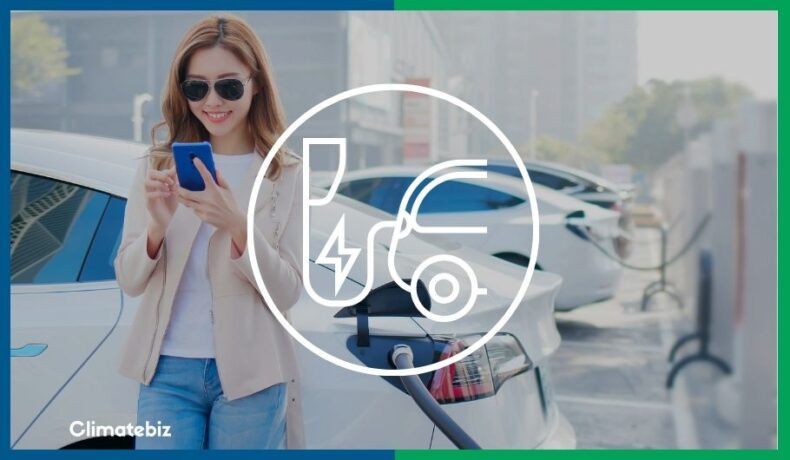We believe that providing a complete guide on “How to charge an electric car in public” will help encourage more car owners to move on to EVs.
Recent trends illustrate that vehicles (EVs) are becoming accepted alternatives to internal combustion engine vehicles (ICEVs). Nations expressing a strong commitment to embracing decarbonization and relatively low operating costs are the main reasons for the increasing EV market share in the past half-decade.
Additionally, the positive testimonials from EV early adopters regarding the overall driving experience help with the ‘Switch-to-EV‘ campaign.
However, some people are still hesitant to jump on the EV wagon. This is because of the lack of accessible literature reassuring them about the “charging time problem” of EVs. After all, it is still true that filling up your traditional fossil fuel car at a gas station is so much quicker.
This valid concern is why governments around the globe are conducting studies on the best way to deploy EV charging infrastructures. This article also addresses these doubts about the lack of public areas to charge your electric car.
As we speak, there are now over 51,000 stations with 132,000 connectors across the U.S to serve EV owners.
First, let’s talk about basic EV charging concepts to help you become comfortable charging your electric cars outside your home. Then let’s look at some online tools we can use to locate public and private charging stations near your area in the U.S. and the U.K.
Table of Contents
How To Charge An Electric Car In Public
Charging Basics
Understanding the charging basics of electric vehicles begins with knowing the difference between kilowatts (kW) and kilowatt-hours (kWh). The former measures power, while the latter is a unit of energy, or how much power is used/charged over time.
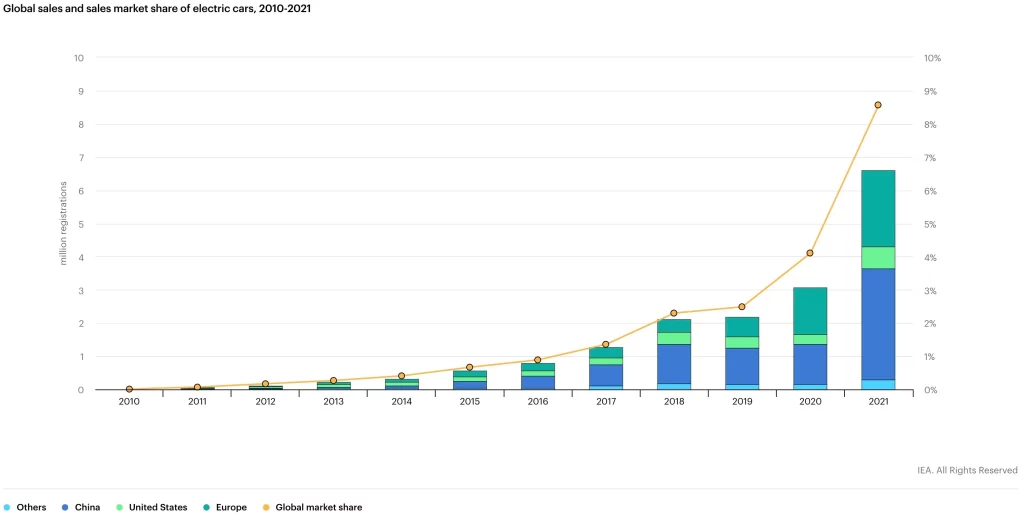
Source: IEA.com
These two components can characterize EV batteries. Knowing the EV battery capacity, measured in kWh, tells you how much energy the EV can store and how far the same EV can go. Kind of like the gas tank of ICEVs
On the other hand, the rate at which you recharge the battery is expressed in kW. Recall that power is the product of voltage and current.
To understand their relationship further in terms of charging, we’ll once again rely on the water analogy of electricity.
Think of a hose and a bucket. The hose is your EV charger, and the bucket is the EV battery. The rate of water flowing through the hose is the power (kW), and the total amount of water that goes into the bucket is the total energy (kWh) delivered.

Source: https://rootedchildhood.com/
Charging Levels
Public EV charging equipment, formally known as electric vehicle supply equipment (EVSE), is classified by the rate they charge your EV battery.
You might have already guessed that the charging rate we are referring to is expressed in units of power (kW).
Two types of EVSEs — namely Level 1 and Level 2 — provide alternating current (AC) electricity to the vehicle. In turn, the EV’s built-in charger converts the AC power to direct current (DC) form, which is needed to charge the batteries.
Level 1 chargers run at 120 volts AC and 12 to 16 amperes. This translates to 1.44 kW to 1.92 kW of power.
Level 2 chargers run at either 208 or 240 volts AC with a current rating ranging between 20 to 80 amperes. They typically provide 6 to 7 kW of power at any given time.
The third type of EVSE is the DC fast charging (DCFC) charger. They are rated at 480V and are considered an extremely rapid charger.
A typical commercial DCFC can add 60 to 80 miles of range to an EV in 20 minutes.
Types Of Connectors
When you charge an electric car in public, you should know that most modern American EVSEs and EVs use a standard SAE J1772 connector. Most EV manufacturers (except Tesla) use the so-called J-plug (another term for the SAE J1772 in North America) for Level 1 and Level 2 charging.

That being said, Tesla provides its patrons with an exclusive Tesla charger with a J1772 adapter so they can charge at non-Tesla public charging stations.
On the other hand, the second type of EVSE connector for DC charging is the Combined Charging Standard (CCS). This is the universal standard plug for DCFC in western countries such as North America and Europe.
However, you should know that while most carmakers have already shifted to CCS plugs as the standard for DCFC charging, some hybrid cars like the Nissan Leaf and Mitsubishi Outlander still use the CHAdeMO plugs.
This isn’t surprising since both the car manufacturers we mentioned are Japanese, and it is essential to note that the CHAdeMO plug is still widely popular in Japan.
EV Charging Process
Let’s take this step-by-step before getting to charging etiquette. Here are the EVSE charging basics you need to know when you charge an electric car in public.
- Find a Public Charge Station
- Park Your Car, then Open your charging port
- Plug the EVSE into your EV charging port
- Pay
Find A Public Charge Station
Finding a public charger begins by figuring out which charging networks are near you. According to the U.S. Department of Energy, it shouldn’t be hard since public charging stations are being deployed rapidly across the U.S. The same can be said for the growth of public EV chargers in the U.K.
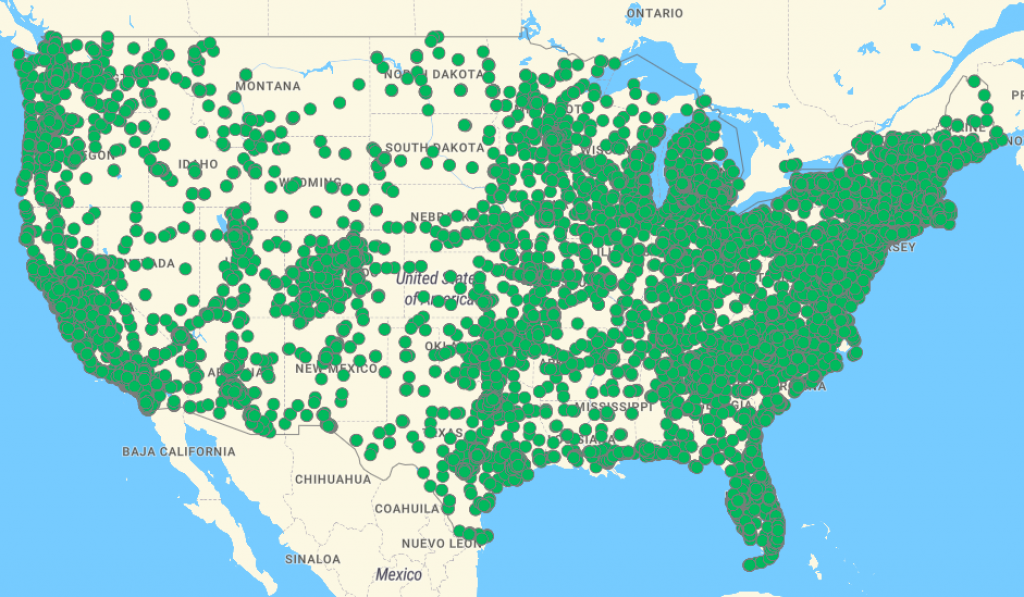
Source: U.S. Department of Energy
So how do you locate the ones near you? We’ll get into that in the next section.
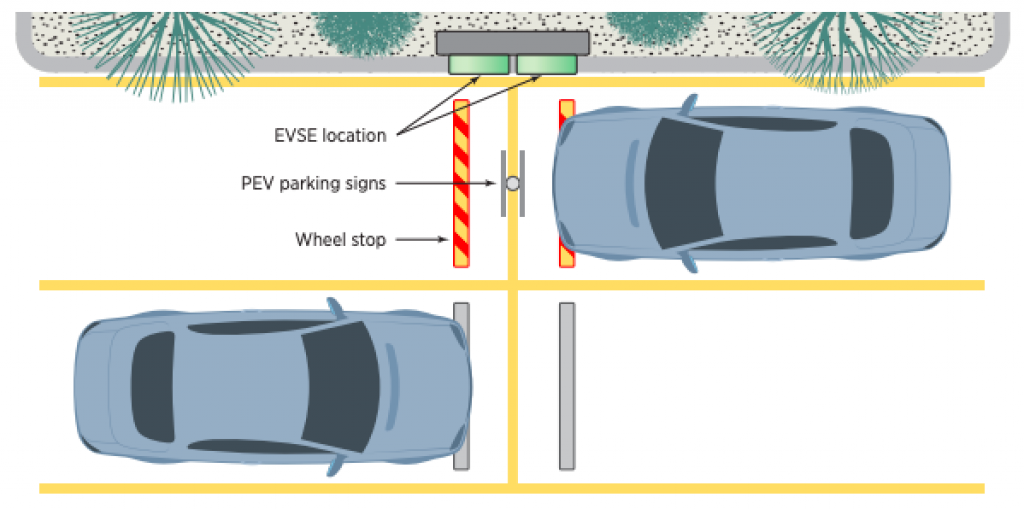
Source: eTec (2010), Electric Vehicle Charging Infrastructure Deployment Guidelines
Park Your Car, Then Open Your Charging Port
Public charging stations aren’t difficult to find onsite. They usually have parking signs indicating where they are. Park your car once you find one, then open your charging port.
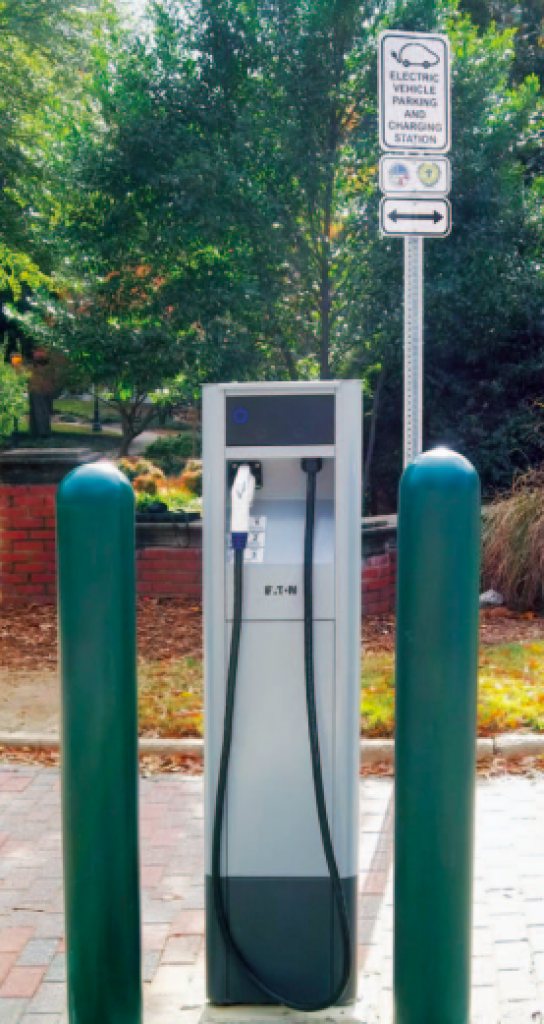
Source: U.S. Department of Energy
Plug The EVSE Into Your EV Charging Port
This step is self-explanatory. Take your standard SAE J1772 EVSE plug and connect it to your EV’s charging port.

Source: Andrew Hudgins of NREL
Pay
Of course, you need to pay up! Although some public charging stations today offer free charging to encourage EV adoption, other companies have investors they need to please.
Hence, you will encounter pay-for-use charging stations. The most popular ones out there are in the U.S.:
- Blink Network by Car Charging Group
- ChargePoint
- Electrify America
- EVgo
- Tesla
Each company usually offers two types of payment packages:
- Subscription-based
- Pay-per-use
There are tradeoffs for each option, but the most important thing you should know is that most of these companies offer their chargers to subscribers and non-subscribers.
Charging Etiquette
Here is an overview of our top tips on “How to be polite to others when you charge an electric car in public“:
- Charge then go
- Don’t unplug other EVs
- Be Considerate
- Put the connector back on when you’re finished
Charge then Go
Make room for the next one in line when your time is up or done with your charging.
Understandably, charging may take some time since most public electric car chargers are Level 2. But this shouldn’t be an excuse to take up a charging spot for hours.
Most companies such as EVgo and ChargePoint have an accompanying app that monitors and notifies users when the EV is fully charged. It is also good to limit your charging time to 2 hours since some station owners might already consider this parking and may charge extra.
Don’t Unplug Other EVs
Why? Well, it’s not exactly the most polite thing to do. However, friendly EV owners may want to share if your battery is in the red.
So avoid removing other plugged EVs and hybrid cars unless you are desperate and their owners left a note permitting you to do so. And, oh, don’t forget to say “thank you!” afterward.
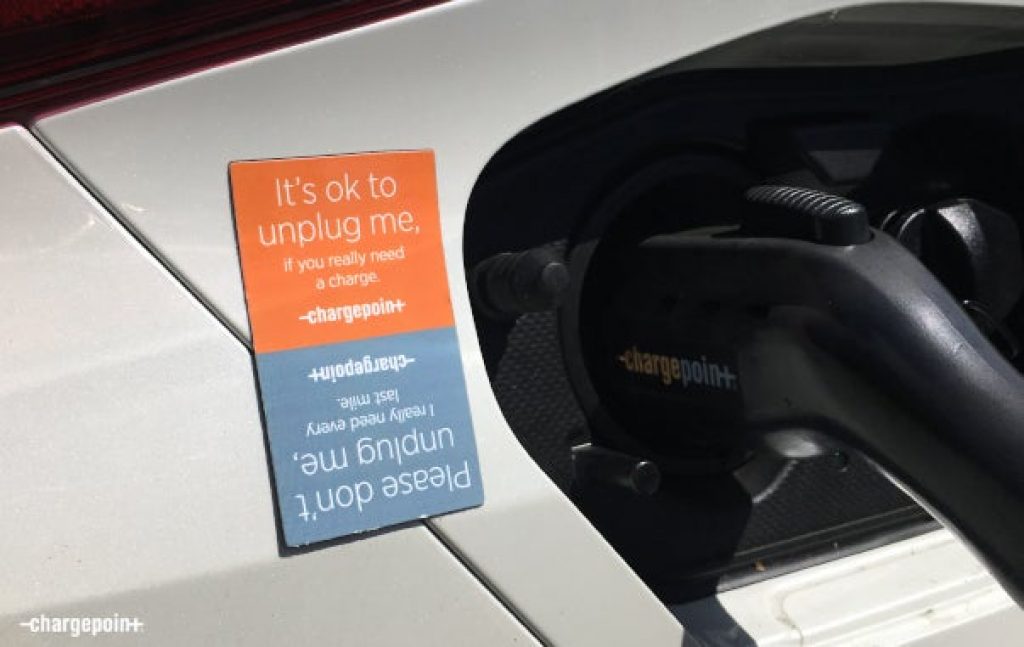
Source: ChargePoint.com
Be Considerate
There is plenty we can gain from being virtuous people. Therefore, being wary of situations and considerate to other EV owners will come a long way.
So, if you’re already almost 100% and someone’s EV charge is nearly depleted, be a good samaritan and offer your spot. This will make you feel good and, at the same time, optimizes the longevity of your battery.
When someone did the unthinkable and unplugged the EVSE from your port, leave them a friendly note or calmly tell them that you are not done yet.
Put the Connector Back on When You’re Done
Well, for one, this is also another way to be considerate and courteous to other public EV station users. Secondly, putting back the connector properly in the charge holster protects it from accidents like being run over and prevents other accidents.
How To Find A Public Charge Station?
We did a quick search, and the top sites that provide information on EV charging locations in the United States are:
We think that PlugShare has the most comprehensive interface among the online resources. However, we recommend checking out ChargePoint first since it has the most extensive public electric vehicle charging network across the United States.
For the case of our U.K. readers, you can use the following sites to locate nearby EV chargers:
But what are the different types of public EV charging stations? Which EV charging network should you join? Let’s answer those questions in the next section.
What Are The Different Types Of Public EV Charge Stations?
While there are many different types of public EV charge stations, this section provides the most common ones.
Companies
Given the growing trend of EV adoption in the modern workforce, it is no surprise that companies and tech giants are seriously considering adding EVSEs as part of their benefits package for employees.
Think about it.
If you’re one of the decision-makers of Company X, having EVSEs at your office parking area will help with the climate change corporate branding and likely help attract and retain talent. It’s also possible you already own a Tesla and want some of the benefits of having a nearby EVSE.
Commercial Stores And Business Owners
It’s not surprising to see why most businesses would benefit from putting up their own charging stations. Customer attraction, retention, corporate branding, added foot traffic, potential LEED certification benefits, and additional revenue are some of the main reasons to put up EVSEs in your commercial space.
Utility-Sponsored
It might not be obvious to some of you, but getting more electric cars on the road and enticing ICEVs owners to switch to EVs would greatly benefit electric utilities. Of course, some challenges lie ahead in deploying EVSEs on a massive scale, but that is another topic we can cover in a separate article.
Electric cars dominating the automotive industry would increase electricity use, more revenue streams, and added benefits to the grid, such as flexibility. Therefore expect to see Utility-owned EVSEs as well.
Government-Sponsored
Lastly, governments of countries that are heavily committed to fighting climate change have a lot to gain by easing the deployment of EVSEs. Aside from fulfilling its ambitious decarbonization targets, having more EVSEs will entice people to adopt EVs, reducing the country’s dependence on gas importations.
Right now, some governments do own some EVSEs, but the biggest slices of their contribution mainly fall under policymaking and putting incentives in place.
Are Public EV Charge Stations Safe?
Are public EV stations safe? Absolutely.
In terms of safety, EV station owners go through the wringer before getting a permit from the government to install EVSEs. They must consult with their contractor and develop a site installation plan that meets numerous standards and requirements.
The plan contains details and diagrams like the electrical system components, hazardous materials, EVSE, lighting, vehicle, pedestrian traffic flow, ventilation, signage and striping, safety and accessibility measures, landscaping, etc.

Source: U.S. Department of Energy
Final Thoughts
There you have it — a complete guide on how to charge an electric car in public.
With turbulent times contributing to volatile fossil fuel prices, many people may turn their heads to EVs as an alternative to cut expenses in the long run. Some studies suggest that owning EVs could be a more economical option over ICEVs for the following reasons:
- Less expensive to maintain than ICEVs;
- Reduced routine scheduled services;
- Decreased brake wear and tear (thanks to regenerative braking);
- Fewer fluids and moving parts to look after.
In addition, the rapid growth of EV charging stations makes it easier for uncertain consumers to make the leap of faith into electric cars.

